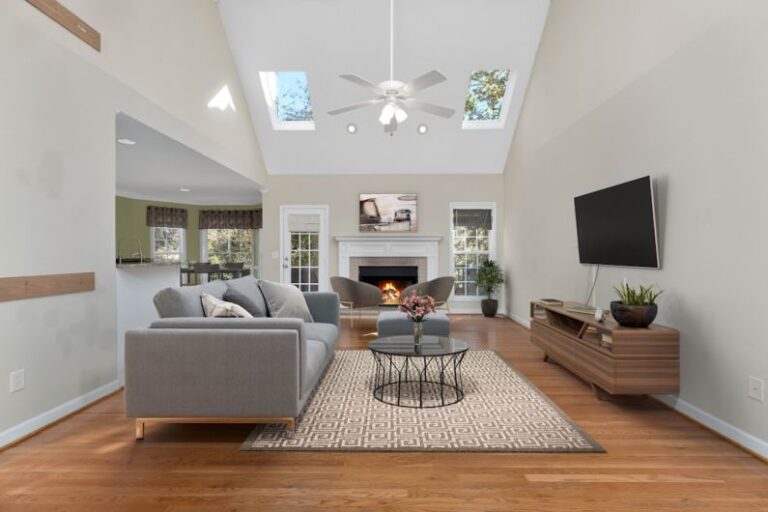
When it comes to staging a home for sale, choosing the right color palette can play a significant role in attracting potential buyers and making the space look more appealing. The colors you select can evoke emotions, create a cohesive look, and highlight the best features of the property. Whether you’re a homeowner looking to sell or a real estate agent staging a property, here are some tips on how to choose the right color palette for staging.
Understand the Power of Neutrals
Neutral colors are a safe and popular choice for staging a home because they create a blank canvas that allows potential buyers to envision themselves living in the space. Shades of white, beige, gray, and taupe can make a room feel more spacious, airy, and light. Neutral colors also provide a sense of calm and sophistication, appealing to a wide range of tastes and preferences.
Consider the Architecture and Style of the Home
When selecting a color palette for staging, it’s essential to consider the architecture and style of the home. The colors you choose should complement the overall design aesthetic and enhance the existing features of the property. For example, a modern home with sleek lines and minimalist design might benefit from a monochromatic color scheme, while a traditional home with architectural details could be enhanced with warm, earthy tones.
Create Visual Flow Between Rooms
To create a cohesive and harmonious look throughout the home, it’s essential to consider the flow of colors from room to room. Choose a color palette that transitions smoothly between spaces, taking into account how each room connects and interacts with the others. This will create a sense of continuity and unity, making the home feel more inviting and well-coordinated.
Use Accent Colors to Add Interest
While neutral colors form the foundation of a staging color palette, incorporating accent colors can add visual interest and personality to the space. Select one or two accent colors that complement the neutrals and inject a pop of color into the room. Accessories such as throw pillows, artwork, rugs, and decorative items can be used to introduce accent colors and create focal points that draw the eye.
Consider the Psychological Impact of Color
Colors have the power to influence our emotions and perceptions, so it’s essential to consider the psychological impact of color when staging a home. Warm colors like red, orange, and yellow can create a sense of warmth, energy, and coziness, while cool colors like blue, green, and purple evoke feelings of calm, serenity, and sophistication. Understanding the emotional responses to different colors can help you create a mood that resonates with potential buyers.
Test Colors in Different Lighting Conditions
Lighting can significantly impact how colors appear in a space, so it’s essential to test your chosen color palette in various lighting conditions. Natural light, artificial light, and the direction of light can all affect how colors are perceived, so be sure to evaluate how your selected colors look throughout the day. Consider painting test swatches on different walls and observing how they change in different lighting situations before making a final decision.
Choose Timeless Colors for Longevity
While trends come and go, choosing timeless colors for staging can ensure that your design remains relevant and appealing to a broad audience. Classic neutrals, soft pastels, and earthy tones are safe choices that have enduring appeal and can stand the test of time. Avoid overly bold or trendy colors that may polarize potential buyers and limit the home’s marketability.
Incorporate Texture for Depth and Dimension
In addition to color, texture plays a crucial role in creating a visually engaging and dynamic space. Incorporating a variety of textures such as wood, metal, glass, fabric, and natural elements can add depth, warmth, and dimension to the staging design. Textured elements can enhance the overall aesthetic appeal of the home and make it feel more inviting and livable.
Emphasize Curb Appeal with Exterior Colors
When staging a home, don’t forget to consider the exterior color palette as well. The colors of the exterior can significantly impact the curb appeal and first impression of the property. Choose exterior colors that complement the architectural style of the home, coordinate with the landscaping, and stand out in a positive way. Freshening up the exterior with a new coat of paint can increase the overall attractiveness and perceived value of the property.
Conclusion:
Selecting the right color palette for staging can make a significant difference in how a home is perceived by potential buyers. By understanding the power of neutrals, considering the architecture and style of the home, creating visual flow between rooms, using accent colors strategically, and taking into account the psychological impact of color, you can create a cohesive and inviting space that appeals to a broad audience. Remember to test colors in different lighting conditions, choose timeless colors for longevity, incorporate texture for depth and dimension, and emphasize curb appeal with exterior colors to create a well-rounded and visually appealing staging design. By following these tips, you can enhance the marketability and desirability of a property, ultimately leading to a successful sale.





